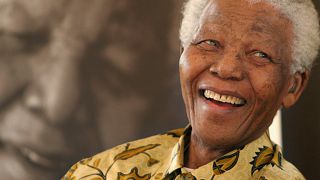United Kingdom
Pablo Picasso's 'Les Trois Danseuses' is one of the stars at a new Tate Modern exhibition.
Surrealism Beyond Borders showcases the masters of a movement that emerged in Paris in the 1920s.
But Tate wants to go further than just featuring the big names - it wants to shine a light on the wider surrealism genre and show how it spread across the world.
"Surrealism is loved by our audiences, and we have a long history of surrealism, but as this exhibition demonstrates, there's so much more to love about surrealism," says Frances Morris, Director of Tate Modern.
"As a result of six years of extraordinary research by a curatorial team travelling the world, we've uncovered a kind of ecosystem of surrealism. The spark ignited in Paris in the early 1920s, but over the course of 60 years, there were other sparks, re-ignitions, conflagrations across the world."
At its heart, surrealism is radical and anti-establishment.
Eugenio Granell was a political activist and a target of censorship and persecution while in his homeland of Spain.
He used surrealism to address his experiences of living in exile after the Spanish Civil War.
He's just one example of surrealist artists who turned their craft into a way of fighting back against the authorities.
"It was an important vehicle because the artists found weapons to counter traditional and conventional forms of communication, so it was subversive," says Morris.
"It was able to draw on subversive politics and the psychoanalysis of Freud. It countered the norm. It was a sense of exploration and opening up discourse at a time where the borders seemed to be closing down across the world."
The exhibition is deliberately international.
It shows how a movement that started in Paris, soon spread across the world.
Those same radical ideals were reflected in new places, by new artists.
"You see that globalisation isn't new, that in the 20s, 30s, 40s and 50s, despite the restrictions imposed by politics and right wing authoritarian governments, artists found extraordinary ways of connecting with each other and moving around the world themselves, but also pushing their ideas," explains Morris.
"And it's kind of like an eco system. And I think, for me, it's incredibly hopeful because you see that art is a space that cannot be confined by geographical territory, cannot be confined by ideologies of authoritarianism."
Surrealist art from 60 countries is featured.
From Buenos Aires to Cairo, Tokyo to Mexico City, the works reflect a broad spectrum of artistic centres.
But art critic Tabish Khan has mixed views of the exhibition.
"So it's great to see surrealism given a global lens, so it's not just this Eurocentric lens that we know of, you know, the Salvador Dalis, the Yves Tanguys of this world. It's showing surrealism in places like Egypt and Cairo, in Mexico, places where you wouldn't expect it to be. So it's great that Tate is broadening the definition of surrealism so we get to see a lot more artists we wouldn't come across naturally," he says.
"But unfortunately, it also is an exhibition where they've got quite academic and very research focussed, and it kind of takes away from them the crazy, bonkers nature that you want to see of surrealism."
But with big names like Picasso, Max Ernst and Yayoi Kusama, the show is likely to be a big hit.
"When it comes to visitors coming to an exhibition, I think surrealism is a big draw. So I think people are in love with the genre and they will come because of it. And when they get here, they will learn that surrealism was a global movement. They will see artists they aren't familiar with. And that's great for people to have their minds broadened by seeing all these different artists," says Khan.
Surrealism Beyond Borders opens on 24 February and runs until 29 August.
It was curated by Matthew Gale.













02:17
Unveiling Picasso: an exhibition of his prints in London
01:02
Jordan closes bridge at the border crossing with the West Bank
Go to video
Zambia and Congo reopen their border after resolving a trade dispute
01:18
Benin: Hundreds of trucks blocked at border with Niger following coup
Go to video
Kenya postpones reopening of border with Somalia
Go to video
Kenya-Somalia agreement to reopen their land border